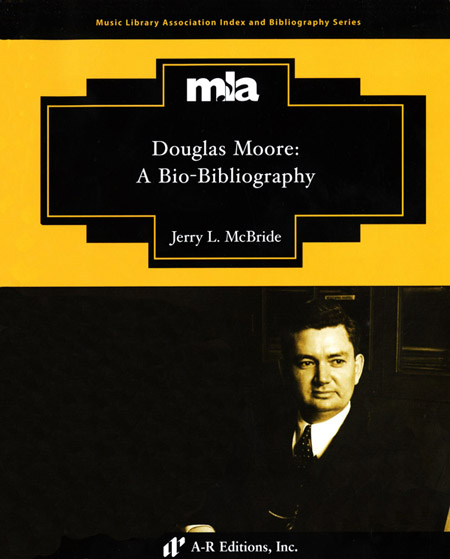Douglas Moore: A Bio-Bibliography
McBride, Jerry L. Douglas Moore: A Bio-Bibliography. Music Library Association Index and Bibliography Series, ed. Mark Palkovic, no. 36. Middleton, Wisconsin: MLA Association; A-R Editions, Inc., 2011.
Jerry L. McBride’s Douglas Moore: A Bio-Bibliography is an easily-navigated guide to the composer Douglas Moore, his works, and the literature written about him. The bibliography contains over 3,000 items ranging from reviews to dissertations, compiled from indexes, databases, bibliographies, discographies, and catalogs. Beyond the bibliography, this book includes an extensive biography, a list and bibliography of musical works (which also addresses performances, published scores, and recordings), a chronological list of musical works, and a classified list of musical works. Wherever possible, entries have been verified by the author and those which haven’t are indicated. In short, the scope of this book is plainly explained and understood, easy to navigate, and includes an extensive index.
Lindsay Weaver
Research Assistant

